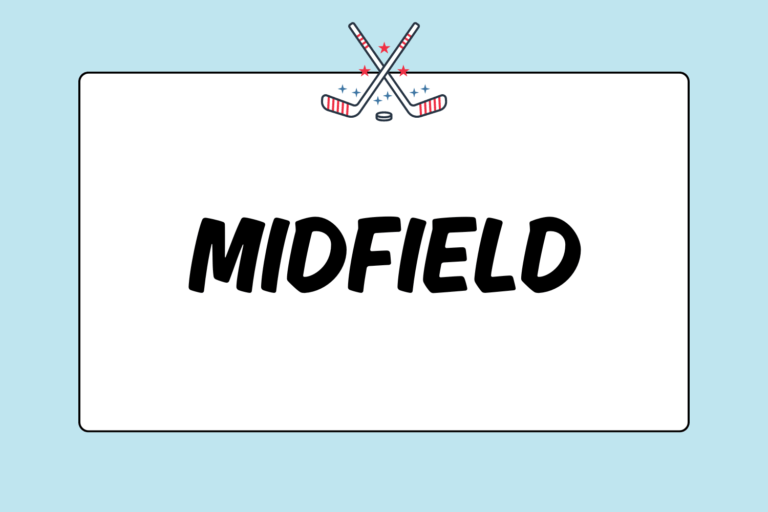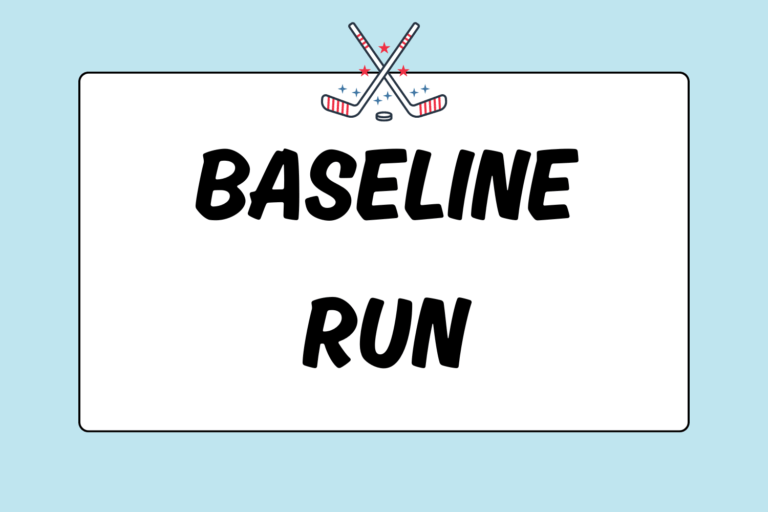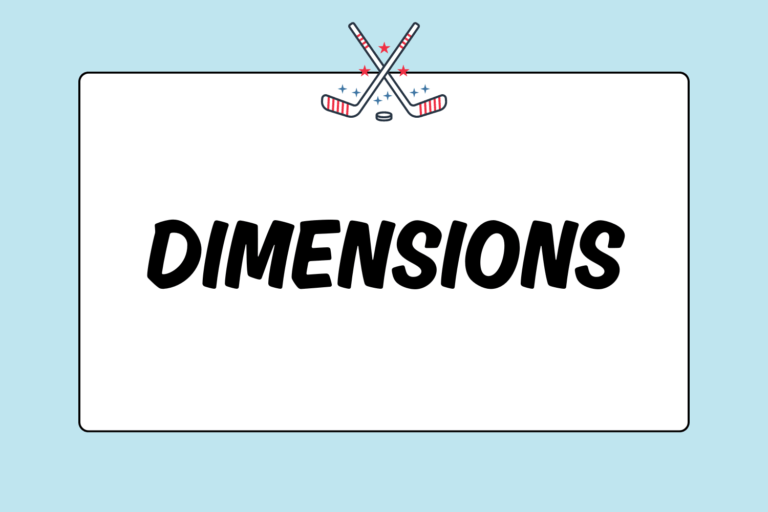During an offensive penalty corner, there are three main positions that make up the “penalty corner team” — the injector, stopper, and shooter. To start the penalty play, the injector pushes the ball to the stopper. The stopper traps the ball and places it so the shooter can take a shot on goal.
This field hockey guide will teach you everything you need to know about playing stopper on the penalty corner team, from where to stand behind the shooting circle to how to stop the ball.
Turf Stop
If a game is played on turf, a stopper is always used. On this type of surface, the stopper is positioned at the top of the shooting circle, in line with the post closest to the injector and to the right of the shooter.
To complete a turf stop:
- At the start of the play, place your stick horizontal on the ground in the reverse stick.
- The toe of the stick should touch the ground and the flat side should face the goal.
- Position your hands in the preferred grip of your choice. Depending on where on the stick you want to make the stop, position your hands accordingly (examples are listed below). Crouch down and get low to the ground, really bending your knees. Rest your weight on the balls of your feet. Place your left foot forward and keep your knee bent so you start low to the ground. Bend your right knee directly beneath you.
- Keep the stick low to the ground and angle the shaft of the stick forward to cushion the ball.
- Trap the ball on the shaft or toe of the stick and give a little at impact.
- Push the bottom (base) of the stick forward to tap the ball into the circle so the shooter can take a shot on goal.
The same basic techniques are applied to every stop; the variations, then, lie in the different ways a stopper can grip the stick and where on the stick she wants to stop the ball.
On the Toe
Some stoppers opt to stop the ball on the toe of their sticks. For these types of stops, here are a few grips to try:
- Grip the handle & the stick: With your right hand, hold the base of the grip. Place your left hand against the bottom of the stick, but do not wrap your fingers around the stick. To prevent wrapping your fingers around the stick, point fingers either towards the foot of the stick or down, towards the toe of the stick.
- Grip the handle: Place both hands on the handle. Place your right hand at the base of the grip and your left hand midway down the shaft (still on the grip). Since you can wrap your fingers around the handle, point your right hand’s palm towards you and your left hand’s palm towards the goal.
Hot Tip: Let the Ball Go Beyond the Circle
According to the rules of the game, the ball must travel outside of the shooting circle before being shot on goal for a goal to count. So, make sure to stop the ball outside of the circle first.
On the Shaft
Other stoppers may feel more comfortable making the stop on the shaft of the stick, where there is more room for error. To stop the ball on the shaft of the stick:
- Place your right hand at the base of the grip and your left at the bottom of the stick. Wrap your fingers around the flat side of the stick. Trap the ball between your hands on the shaft of the stick.
- Place both hands together at the base of the grip with the right hand gripped closer to the top (palm facing you) and the left hand lower towards the bottom of the stick (palm facing the goal). Trap the ball on the shaft of the stick below both hands.
Grass Stop
The uneven surface of the grass can change the path of the ball in an instant. So as a stopper, you need to be prepared for bouncing, lifted, or off-target balls. This stop, specific to grass surfaces, will help you to adapt your stop to these variables.
To stop the ball on grass:
- Position your body low to the ground by bringing your left leg forward and bending your knee about 90 degrees. Then, extend your right leg behind you. Rest your weight on the balls of your feet.
- Hold the stick in front of you, upright and vertical to the ground. With your left hand, hold the base of the grip; face your palm towards the goal. Place your right hand flat against the bottom of the stick with your fingers pointed upwards, following the length of the stick — do not wrap your fingers around the stick.
- When the injector releases the ball, watch the ball and reposition your body by moving your feet to align yourself with the ball’s path.
- Trap the ball at the bottom of the stick or deflect it down with the shaft (if it’s bouncing). Angle the top of the stick forward at a 45-degree angle to cushion the ball. Let the stick give a little at impact.
- Tap the ball lightly into the circle by pushing the bottom of the stick forward with your right hand (still placed at the base of the stick).
- The shooter will then strike the ball once it enters the circle to take a shot on goal.
Hot Tip: To Tap or Not
Always trap the ball outside of the circle. If the shooter is going to take a drag flick shot, do not tap the ball into the circle — the shooter will drag it in. If the shooter is taking a hit, tap the ball into the circle for her.
Make the Stop
Reading the pass is one of the most important aspects to stopping the ball on a penalty corner. Most of the time, your injector can get the ball right to you. But, if she misses, you need to readjust yourself accordingly so you can make the stop. If you miss the ball, it could cost your team an important shot opportunity. So, make sure you’re aware of how the ball is traveling towards you — its speed, its movement, and any bouncing.
Lastly, don’t let the ball bounce off your stick — make sure to stop it dead in its track. When you do tap it into the circle, the tap should be controlled and accurate. Being a great stopper requires a steady hand and great ball-handling skills. So, work on controlling the ball once you receive it before making a quick and accurate pass into the circle for the shooter. Not many people can stop the ball during a penalty corner, so mastering these techniques will be a great asset to the team!





